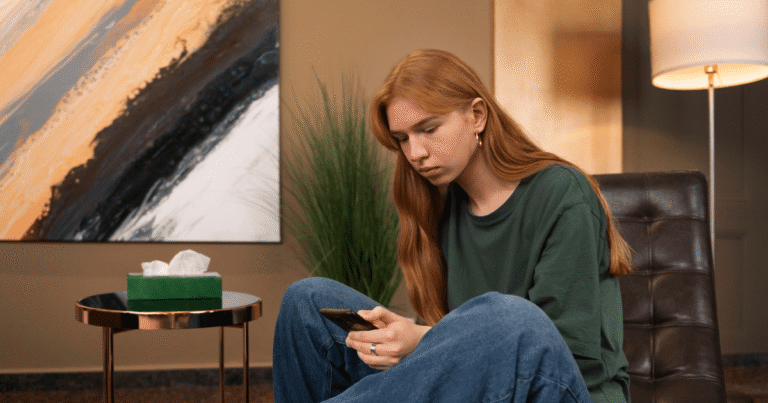DBT for Social Anxiety: The Complete Guide to Building Emotional Resilience and Social Confidence
Struggling with intense emotions that make social situations feel overwhelming? Traditional CBT approaches feeling too challenging or invalidating? DBT for social anxiety offers a powerful alternative that combines acceptance with practical skills, helping you build genuine confidence from the inside out.
While Cognitive Behavioral Therapy (CBT) remains the gold standard for social anxiety treatment, DBT for social anxiety is gaining recognition as an incredibly effective approach, especially for people who experience intense emotions, have difficulty with self-criticism, or struggle with traditional CBT methods.
This comprehensive guide explores how Dialectical Behavior Therapy can transform your relationship with social anxiety by teaching you to manage overwhelming emotions, build authentic relationships, and develop unshakeable inner confidence.
Understanding DBT: More Than Just Another Therapy
What Makes DBT Different from CBT
Traditional CBT approach:
- Focuses primarily on changing thoughts and behaviors
- Emphasizes challenging “irrational” thoughts
- Goal-oriented toward symptom reduction
- Can sometimes feel invalidating if you’re not ready for change
DBT approach:
- Balances acceptance with change strategies
- Validates that your emotions make sense given your experiences
- Teaches practical skills for managing intense feelings
- Emphasizes building a life worth living, not just reducing symptoms
The “Dialectical” Philosophy
What “dialectical” means:
- Holding two seemingly opposite truths at the same time
- You can accept yourself AND work toward change
- Your anxiety is understandable AND you can learn to manage it
- You can feel terrified AND still take social risks
Why this matters for social anxiety:
- Reduces the shame and self-criticism that often accompany social fears
- Allows you to validate your struggle while building skills
- Creates space for both fear and courage to coexist
- Prevents the all-or-nothing thinking that maintains anxiety
The Four Pillars: How DBT Skills Target Social Anxiety
1. Mindfulness Skills: The Foundation of Emotional Freedom
Core mindfulness skills for social anxiety:
Observe
What it means: Noticing your thoughts, feelings, and sensations without getting caught up in them For social anxiety: Instead of being consumed by anxious thoughts (“Everyone thinks I’m weird”), you learn to observe them (“I’m having the thought that everyone thinks I’m weird”)
Practical application:
- Notice physical sensations of anxiety without fighting them
- Observe social situations like a scientist rather than a victim
- Watch thoughts come and go without believing they’re facts
- Pay attention to what’s actually happening vs. what you fear might happen
Describe
What it means: Putting words to your experience without interpretation For social anxiety: Learning to describe facts vs. judgments
Examples:
- Fact: “My heart is beating fast” vs. Judgment: “I’m having a panic attack”
- Fact: “She didn’t respond to my text” vs. Judgment: “She hates me”
- Fact: “I stumbled over my words” vs. Judgment: “I’m socially incompetent”
Participate
What it means: Fully engaging in activities without self-consciousness For social anxiety: Learning to be present in social situations rather than monitoring your performance
Practice strategies:
- Throw yourself into conversations without scripting every word
- Focus on listening to others rather than planning what to say next
- Engage in group activities without constantly checking how you’re being perceived
- Allow yourself to be spontaneous and authentic
Non-judgmentally
What it means: Letting go of evaluations of good/bad, right/wrong For social anxiety: Stopping the constant self-criticism that fuels social fears
Applications:
- Notice social “mistakes” without labeling yourself as failures
- Observe others’ reactions without immediately assuming negative judgments
- Practice self-compassion when social interactions don’t go perfectly
- Release the need for every social encounter to be “successful”
One-mindfully
What it means: Doing one thing at a time with full attention For social anxiety: Staying present instead of multitasking between conversation and anxiety monitoring
In practice:
- When talking to someone, focus completely on that conversation
- Avoid simultaneously monitoring your appearance, voice, and their reactions
- Stay present instead of mentally rehearsing future conversations
- Give your full attention to the current moment rather than past social regrets
Effectively
What it means: Focusing on what works rather than what’s “right” For social anxiety: Choosing actions that help you build connections rather than protect your ego
Examples:
- Asking for clarification instead of pretending to understand
- Admitting mistakes rather than defending your image
- Sharing genuine interests even if they’re not “cool”
- Prioritizing authentic connection over appearing perfect
2. Distress Tolerance: Your Emergency Toolkit for Social Situations
Why distress tolerance matters for social anxiety: Social situations often trigger intense, overwhelming emotions that can lead to panic, avoidance, or escape behaviors. Distress tolerance skills help you survive these crisis moments without making them worse.
TIPP for Acute Social Anxiety
Temperature:
- Hold ice cubes or splash cold water on your face
- Step outside for fresh, cool air
- Use cooling breathing techniques
- Why it works: Activates the dive response, quickly calming your nervous system
Intense Exercise:
- Do jumping jacks in the bathroom
- Take a brisk walk around the building
- Clench and release your fists repeatedly
- Why it works: Burns off stress hormones and releases calming endorphins
Paced Breathing:
- Breathe out longer than you breathe in (e.g., 4 counts in, 6 counts out)
- Practice belly breathing rather than chest breathing
- Count your breaths to stay focused
- Why it works: Activates the parasympathetic nervous system
Paired Muscle Relaxation:
- Tense and release muscle groups while breathing
- Start with facial muscles, work down to your toes
- Hold tension for 5 seconds, then release for 10 seconds
- Why it works: Releases physical tension that accompanies anxiety
ACCEPTS for Longer-Term Distress
Activities: Engage in something that requires focus
- Join a group conversation about a specific topic
- Help with party setup or cleanup tasks
- Play games or participate in structured activities
Contributing: Focus on helping others
- Offer to help the host with something
- Listen supportively to someone else’s problems
- Share knowledge or skills that benefit the group
Comparisons: Put your situation in perspective
- Remember that everyone feels socially awkward sometimes
- Think about times when social situations went well
- Consider that others are likely focused on themselves, not judging you
Emotions: Generate different emotions
- Watch funny videos on your phone during breaks
- Listen to uplifting music before social events
- Look at photos that make you happy or grateful
Pushing Away: Temporarily distract from the situation
- Set a mental timer to revisit anxious thoughts later
- Mentally “shelf” social worries for a designated worry time
- Refuse to engage with catastrophic predictions in the moment
Thoughts: Occupy your mind differently
- Count objects in the room or people’s clothing colors
- Recite song lyrics or poetry in your head
- Plan something enjoyable for after the social event
Sensations: Change your physical experience
- Focus on the taste of food or drinks
- Notice textures of objects around you
- Pay attention to sounds, smells, or visual details
3. Emotion Regulation: Understanding and Managing Your Social Anxiety
Why emotion regulation is crucial for social anxiety: Social anxiety involves intense, often shame-based emotions that can feel overwhelming and uncontrollable. These skills help you understand your emotions and respond to them skillfully.
Understanding Your Emotions
PLEASE Skills for Emotional Vulnerability:
Treat Physical Illness:
- Address any medical conditions that might worsen anxiety
- Take prescribed medications consistently
- Don’t ignore physical symptoms that affect your mood
- Get regular medical checkups
Balance Eating:
- Maintain stable blood sugar through regular, balanced meals
- Avoid excessive caffeine which can worsen anxiety
- Don’t skip meals before social events
- Notice how different foods affect your anxiety levels
Avoid Mood-Altering Substances:
- Limit alcohol use as a social crutch
- Avoid using substances to cope with social anxiety
- Be aware of how caffeine, nicotine, or other substances affect your social confidence
- Consider how medications might interact with your anxiety
Balance Sleep:
- Maintain consistent sleep schedules
- Aim for 7-9 hours of quality sleep nightly
- Avoid staying up late worrying about social events
- Create calming bedtime routines
Get Exercise:
- Regular physical activity reduces baseline anxiety levels
- Exercise before social events can help manage nervous energy
- Find activities you enjoy to make exercise sustainable
- Consider social forms of exercise to practice interpersonal skills
ABC PLEASE for Emotion Regulation
Accumulate Positive Experiences:
- Build mastery by engaging in activities you’re good at
- Schedule pleasant activities that don’t involve social performance
- Create positive memories to counterbalance social anxiety
- Engage in hobbies and interests that build confidence
Build Mastery:
- Develop skills and competencies outside of social situations
- Set and achieve small, manageable goals
- Practice activities that make you feel capable and confident
- Remember that competence in one area builds overall self-esteem
Cope Ahead:
- Plan for challenging social situations in advance
- Rehearse coping skills for specific social scenarios
- Identify potential triggers and prepare responses
- Create “if-then” plans for difficult moments
4. Interpersonal Effectiveness: The Heart of Social Confidence
Why these skills are transformative for social anxiety: Many people with social anxiety lack confidence in social situations because they don’t have clear strategies for navigating interpersonal interactions. These skills provide concrete tools that make social situations feel more predictable and manageable.
DEAR MAN: Getting Your Needs Met
Describe: State the facts objectively
- “I noticed that I haven’t been included in the last few team lunches”
- “When you interrupted me during my presentation…”
- “I’ve been feeling left out of the group conversations”
Express: Share your feelings and opinions
- “I feel disappointed when I’m not included”
- “I felt embarrassed when that happened”
- “I’d like to be more involved in the team”
Assert: Ask for what you want clearly
- “I’d like to be invited to join you for lunch”
- “I’d appreciate if you could let me finish my thoughts”
- “Could you help me feel more included in group discussions?”
Reinforce: Explain the benefits or consequences
- “I think I’d be more productive if I felt more connected to the team”
- “This would help me contribute more effectively to our projects”
- “I believe this would improve our working relationship”
Mindful: Stay focused on your goal
- Don’t get distracted by other issues
- Stick to your main point
- Avoid bringing up past grievances
Appear Confident: Use confident body language and tone
- Make appropriate eye contact
- Speak clearly and at adequate volume
- Stand or sit up straight
- Use confident gestures
Negotiate: Be willing to compromise
- “Would it work if we alternated who chooses the restaurant?”
- “I’m open to other solutions that would help me feel more included”
- “What would make this work for everyone?”
GIVE: Maintaining Relationships
Gentle: Be kind and respectful
- Avoid harsh words or aggressive tone
- Don’t attack the other person’s character
- Stay calm even if you’re feeling anxious
- Show respect for their perspective
Interested: Show genuine interest in the other person
- Ask questions about their thoughts and feelings
- Listen actively without planning your response
- Validate their perspective even if you disagree
- Remember details from previous conversations
Validate: Acknowledge their feelings and perspective
- “I can understand why you might feel that way”
- “That makes sense given your experience”
- “I can see how my actions might have affected you”
- “Your feelings about this are completely valid”
Easy Manner: Use humor and lightness when appropriate
- Don’t take yourself too seriously
- Use appropriate humor to lighten tension
- Smile and show warmth
- Keep interactions pleasant and positive
FAST: Maintaining Self-Respect
Fair: Be fair to yourself and others
- Don’t minimize your own needs
- Respect others’ rights and boundaries
- Seek win-win solutions when possible
- Avoid taking advantage or being taken advantage of
No Apologies: Don’t apologize unnecessarily
- Avoid saying “sorry” for having needs or feelings
- Don’t apologize for existing or taking up space
- Only apologize when you’ve actually done something wrong
- Stand behind your legitimate requests and feelings
Stick to Values: Stay true to your principles
- Don’t compromise your core values to be liked
- Act in ways that align with who you want to be
- Don’t lie or be deceptive to avoid conflict
- Make choices you can feel good about later
Truthful: Be honest and authentic
- Don’t exaggerate or minimize to gain sympathy
- Share your genuine thoughts and feelings
- Avoid people-pleasing at the expense of honesty
- Be authentic rather than performing a role
DBT vs. CBT for Social Anxiety: Making the Right Choice
When DBT Might Be More Effective
Consider DBT for social anxiety if you:
- Experience very intense emotions that feel overwhelming
- Struggle with harsh self-criticism and shame
- Have difficulty tolerating distress without avoiding situations
- Need validation and acceptance before you can work on change
- Have tried CBT and found it too challenging or invalidating
- Have co-occurring issues like emotion dysregulation or relationship problems
- Respond well to structured skills and concrete tools
- Benefit from mindfulness and acceptance-based approaches
When CBT Might Be More Appropriate
CBT might be better if you:
- Can identify specific thought patterns that maintain your anxiety
- Are ready to challenge and change cognitive distortions
- Want a more direct, problem-solving approach
- Have social anxiety without significant emotion regulation issues
- Prefer exposure-based treatments
- Want to focus specifically on social anxiety rather than broader emotional skills
Integrative Approaches
Many therapists successfully combine DBT and CBT by:
- Using DBT skills to build emotional tolerance for CBT exposure exercises
- Applying DBT mindfulness and distress tolerance during CBT homework
- Using DBT validation techniques to support CBT change strategies
- Teaching DBT interpersonal skills alongside CBT social skills training
Practical Applications: Using DBT Skills in Real Social Situations
Before Social Events
Preparation strategies:
- Use PLEASE skills to ensure you’re emotionally prepared
- Practice DEAR MAN for any important conversations you need to have
- Set realistic goals using SMART criteria
- Plan specific DBT skills you’ll use if anxiety becomes overwhelming
Coping ahead:
- Visualize potential challenging moments and your skill responses
- Identify which ACCEPTS skills you’ll use if you need a break
- Plan your TIPP strategy for acute anxiety moments
- Prepare gentle, validating self-talk for difficult moments
During Social Interactions
Mindfulness in action:
- Practice participate by fully engaging in conversations
- Use observe to notice anxiety without being controlled by it
- Apply non-judgmentally to social “mistakes” or awkward moments
- Stay one-mindful by focusing on the current conversation
Interpersonal effectiveness in practice:
- Use GIVE skills to build rapport and connection
- Apply FAST to maintain your self-respect while being social
- Practice DEAR MAN for any needs or requests that arise
- Stay mindful of your goals for each social interaction
After Social Events
Emotion regulation and self-care:
- Use mindfulness to observe any post-event anxiety or rumination
- Practice self-validation for taking the social risk
- Apply emotion regulation skills to manage any shame or disappointment
- Focus on what went well rather than only analyzing mistakes
Learning and growth:
- Reflect on which DBT skills were most helpful
- Notice areas where you want to practice more
- Celebrate any moments of authentic connection or courage
- Plan how to apply lessons learned to future social situations
Building Your DBT Skills Practice
Daily Skills Practice
Morning routine:
- Start with mindfulness practice to set a grounded tone
- Review your daily goals and values
- Practice PLEASE skills by taking care of basic needs
- Set intentions for how you want to show up socially
Throughout the day:
- Use mindfulness skills during routine social interactions
- Practice interpersonal effectiveness with low-stakes conversations
- Apply distress tolerance skills to everyday social stress
- Notice and validate your emotions without judgment
Evening reflection:
- Review the day using DBT principles
- Practice self-compassion for any social challenges
- Celebrate moments when you used skills effectively
- Plan for tomorrow’s social opportunities and challenges
Working with a DBT Therapist
What to look for in a DBT therapist:
- Specific training in DBT methods and philosophy
- Experience adapting DBT skills for anxiety disorders
- Understanding of how to apply DBT to social anxiety specifically
- Willingness to practice skills during sessions
- Emphasis on both acceptance and change
Questions to ask potential DBT therapists:
- How do you adapt DBT skills for social anxiety?
- Do you offer DBT skills groups in addition to individual therapy?
- How do you help clients practice skills in real-world situations?
- What’s your approach to balancing acceptance and change?
Self-Directed DBT Learning
Resources for learning DBT skills:
- DBT workbooks specifically adapted for anxiety
- Online DBT skills courses and modules
- DBT apps for practicing skills and tracking progress
- Local DBT skills groups or workshops
Creating accountability:
- Find a practice partner to work through skills together
- Join online DBT communities for support and motivation
- Track your skills practice and notice improvements
- Regular check-ins with a therapist or coach
Advanced DBT Concepts for Social Anxiety
Wise Mind for Social Decisions
Understanding the three states of mind:
- Reasonable mind: Logical, factual, problem-solving focused
- Emotion mind: Driven by feelings, sometimes impulsive
- Wise mind: Integration of reason and emotion, intuitive knowing
Applying wise mind to social anxiety:
- Use reasonable mind to evaluate social threats realistically
- Honor emotion mind’s valid concerns about social risks
- Access wise mind to make authentic social choices
- Balance self-protection with genuine connection
Radical Acceptance of Social Anxiety
What radical acceptance means:
- Completely accepting your social anxiety without approving of it
- Letting go of the struggle against having anxiety
- Acknowledging reality without fighting what is
- Finding peace even in the presence of social fear
How this helps:
- Reduces the secondary suffering of fighting anxiety
- Creates space for skills practice without self-criticism
- Allows for authentic self-expression despite fear
- Builds genuine confidence rather than false bravado
Building Mastery in Social Situations
Mastery activities for social confidence:
- Gradually challenging yourself with new social situations
- Building competence in areas that translate to social confidence
- Setting and achieving small social goals
- Practicing skills until they become automatic
The Long-Term Journey: DBT for Lasting Social Confidence
What to Expect in Recovery
Early stages (1-3 months):
- Learning and practicing basic DBT skills
- Beginning to notice emotions without being overwhelmed
- Starting to use skills in low-risk social situations
- Building awareness of social anxiety patterns
Middle stages (3-12 months):
- Applying skills consistently in challenging social situations
- Developing genuine interpersonal effectiveness
- Building distress tolerance for social discomfort
- Creating more authentic relationships
Advanced stages (1+ years):
- Skills become natural and automatic
- Social anxiety rarely interferes with important goals
- Authentic self-expression in most social situations
- Ability to help others with similar struggles
Maintaining Progress and Preventing Relapse
Ongoing practices:
- Regular skills practice even when feeling confident
- Continued mindfulness and emotion regulation work
- Seeking support during particularly stressful periods
- Celebrating growth while remaining realistic about challenges
Building resilience:
- Developing a strong support network of understanding friends
- Creating a lifestyle that supports emotional regulation
- Building meaning and purpose beyond social performance
- Maintaining connection with DBT principles and community
Your DBT Journey Starts Now
DBT for social anxiety offers a unique and powerful approach to building genuine social confidence. Unlike treatments that focus only on changing thoughts or behaviors, DBT recognizes that lasting change requires both acceptance of your current experience and practical skills for managing intense emotions.
The path forward:
- Start with basic mindfulness practice to build awareness
- Learn distress tolerance skills for managing overwhelming moments
- Develop emotion regulation skills for long-term stability
- Practice interpersonal effectiveness skills in real social situations
Remember:
- Your social anxiety makes sense given your experiences
- You can learn to manage intense emotions skillfully
- Authentic relationships are built on genuine connection, not perfect performance
- Small steps in practicing DBT skills lead to significant long-term changes
Whether you work with a DBT therapist, join a skills group, or begin learning on your own, the journey toward greater social confidence and emotional freedom starts with a single step: the willingness to try a different approach.
DBT for social anxiety isn’t about becoming someone different—it’s about becoming more skillfully and authentically yourself in social situations. The skills are waiting for you. Your more confident, emotionally regulated future self is ready to emerge.
The question isn’t whether you can overcome social anxiety using DBT skills—it’s how quickly you can start building the emotional resilience and interpersonal effectiveness that will serve you for the rest of your life.







